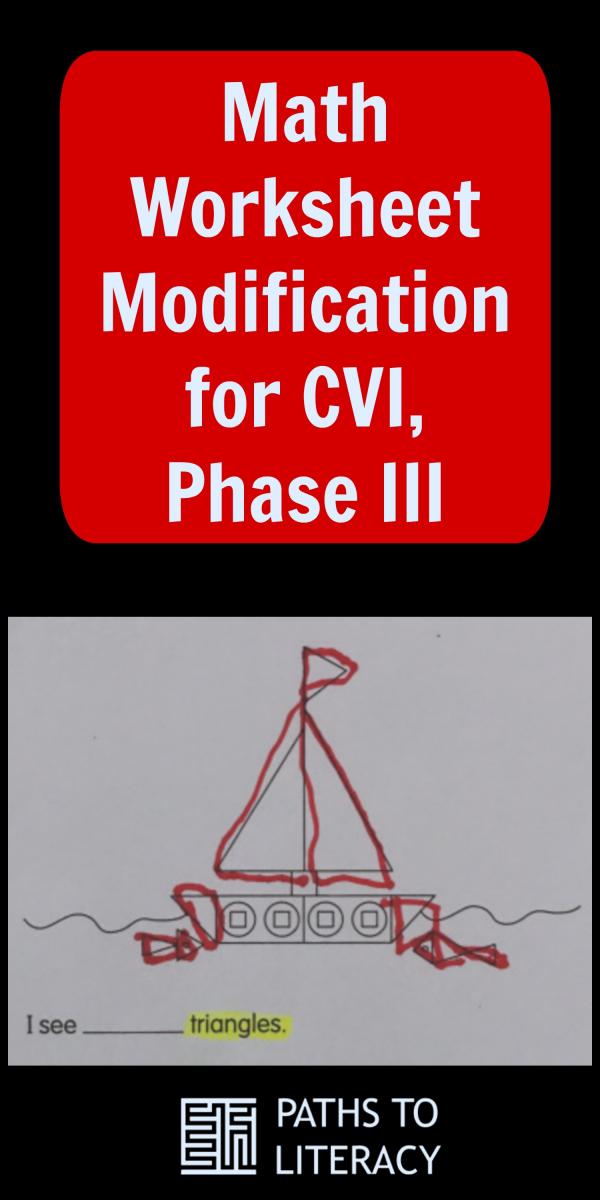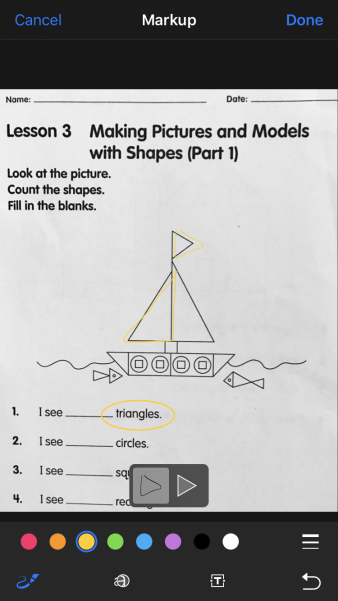Math Modification for CVI, Phase III
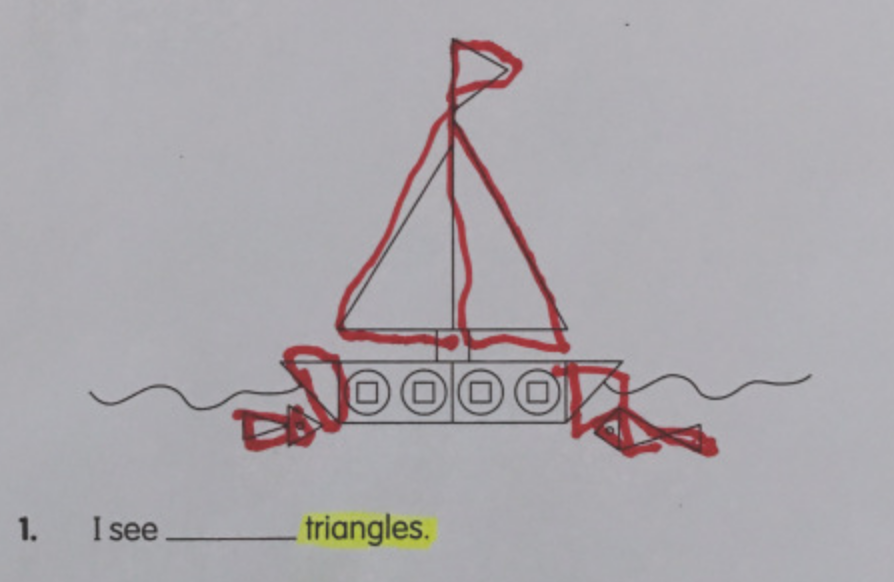
My son is in Phase III CVI (Roman-Lantzy) and attends first grade, in the general education classroom. Schools love to use worksheets for kids to practice math, time telling, word matching, etc. For students with CVI, and their parents, the worksheets are a constant challenge to modify. When modifying for students with CVI, consider the following questions. What is the overall concept being taught? What are the essential elements? Is it critical that a student with CVI spend his visual energy identifying an abstract black and white line drawing? Or is there a different way to teach the concept?
Modifying a Math Worksheet About Shapes
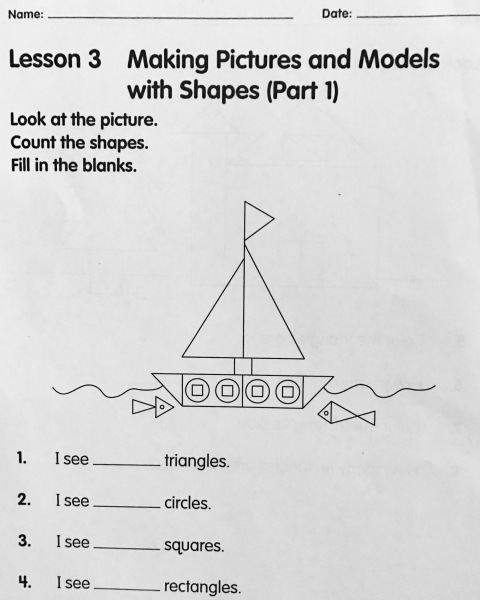 The current math unit is about shapes and the math worksheet pictured recently came home with my son. Short of using manipulatives, my thought was to reduce the complexity of array by covering half of the shape (Roman-Lantzy), and counting in smaller, less visually complex sections (and covering the text at top along with that). In addition we would use preferred color (Roman-Lantzy), yellow, to highlight the word for each shape. The worksheet is on standard letter size paper. Note that the modification is not about enlarging.
The current math unit is about shapes and the math worksheet pictured recently came home with my son. Short of using manipulatives, my thought was to reduce the complexity of array by covering half of the shape (Roman-Lantzy), and counting in smaller, less visually complex sections (and covering the text at top along with that). In addition we would use preferred color (Roman-Lantzy), yellow, to highlight the word for each shape. The worksheet is on standard letter size paper. Note that the modification is not about enlarging.
In addition to using masking to reduce visual complexity, TVI Matt Tietjen* made the following suggestion:
This is a tricky one! There are a few possible ways to do this. I like the idea of showing part of the worksheet at a time to minimize complexity and I have some other thoughts. Thinking of the vision of a student in Phase III CVI (Roman), here is what I would try first.
- Make four (4) copies of the worksheet if possible, one for each shape. Or take four pictures of it on an iPad or other tablet device.
- On each page, I would focus on just one type of shape (triangles, circles, squares, or rectangles) and ask the student to go through that page and “find all the triangles” and trace each one as he finds it with a colored marker. By tracing each shape as he goes, he is visually “marking” each one that he has already found, which should minimize the visual search load as he continues to search for more triangles (complexity of array, Roman). During this search, you would also use masking to show only part of the worksheet at a time, as originally suggested.
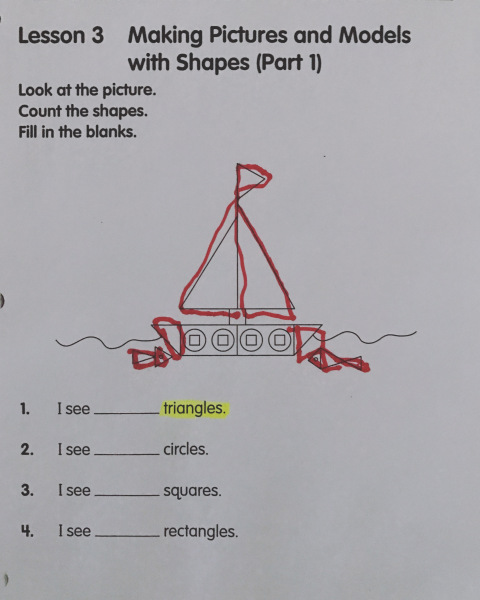
- Once the student is finished finding and highlighting all the triangles on the first piece of paper, he could move onto the next copy of the worksheet and look for only the squares, again marking them as he goes. Repeat the same steps using the other worksheet copies to find squares and rectangles.
- To do this using an iPad, you could just take four pictures of the worksheet and the student could use the “markup” feature in the native photos application to highlight each shape as he finds it.
This could be one strategy to try if the student has difficulty counting all of the shapes on one sheet.
Thank you, Matt!
*Matt Tietjen is a teacher of the visually impaired (TVI) working in Connecticut and author of What’s the Complexity, a framework for designing an accessible school day for students who have cortical visual impairment (CVI), based on the work of Christine Roman-Lantzy and the CVI Range.
